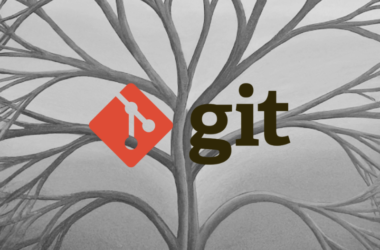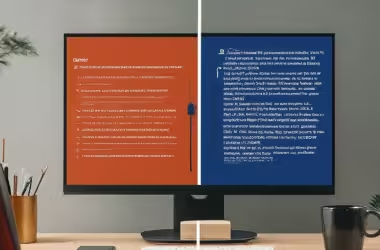Are you a developer who tries to do many things at once? Do you think handling lots of tasks boosts your productivity? You might want to reconsider. Studies reveal multitasking actually slows you down and prevents you from achieving your best.
In the quick-moving development field, focusing on one thing at a time is key. It sharpens your concentration, raises your efficiency, and helps you reach a higher level of expertise. This single-task approach really makes you stand out.
Key Takeaways:
- Single-tasking is more efficient and effective than multitasking for developers.
- Multitasking is a myth – our brains can only switch between tasks quickly, leading to slower performance.
- Retraining the brain and creating new patterns can help developers stay focused on one task.
- Single-tasking enables deep work and leads to higher quality results.
- Implementing rules and techniques for single-tasking can help developers avoid multitasking pitfalls.
The Myth of Multitasking
Many believe multitasking lets us do more in less time. Yet, research proves this belief is false. Multitasking doesn’t work well for our brains.
Our brain can’t handle several tasks that need a lot of thought at once. It seems like we’re doing many things. But, our brain just switches from one task to another. This eats up a lot of mental energy.
Trying to multitask makes us slower and harms our work quality. Switching tasks all the time messes up our focus. We can’t fully dive into any task. So, our work suffers and we get less done.
Think about writing an email while in a meeting. You won’t focus well on either. If you tackle one thing at a time, you’ll do it better and faster.
So, avoid multitasking. It weakens your brainpower and lowers your effectiveness. Stick to doing one thing at a time for better results.
| Myth of Multitasking | Reality of Single-Tasking |
|---|---|
| Slows down performance | Boosts efficiency |
| Leads to lower quality work | Improves work quality |
| Divides cognitive effort | Focuses cognitive effort |
| Impairs concentration | Enhances focus |
The Reality of Task Switching
Trying to do many things makes our brain switch tasks constantly. This wastes energy and slows us down. By sticking to one task, we avoid unnecessary switches. This lets us work smarter and faster.
Single Task to Retrain Your Brain
Our brains love to spot patterns and guess what comes next. This skill is helpful but can make focusing hard. To better focus, we must teach our brains new habits and timing.
Using a timer is a great way to start. Set a timer for your task and slowly make the breaks longer. This helps your brain stay focused more and switch tasks less.
Taking breaks is also key to good single-tasking. Breaks give your brain time to rest and get ready for more work. During breaks, try relaxing activities like stretching, deep breathing, or walking.
Stick with these steps to change how your brain handles patterns and time. This can make you better at focusing and single-tasking.
Single Task to Get More High-Quality Work Done
Single-tasking is key for deep work and high-quality outcomes. Multitasking often just leads to busywork that slows us down. Focusing on one task at a time boosts developers’ creativity and problem-solving skills.
Deep work, a concept from Cal Newport, is about intense focus. This focus lets developers tackle complex issues with innovative solutions. It demands complete attention.
By sticking to one task, developers cut down on inefficiency and clutter in their minds. Instead of flipping between tasks, they can dive deep into one project. This approach makes their problem-solving more effective.
Although multitasking might appear efficient, it actually limits critical thinking and top-notch work. Single-tasking focuses developers on the most crucial and challenging parts of their work. This focus leads to remarkable results.
Benefits of Single Tasking
Embracing single-tasking brings developers many advantages for better productivity and work quality:
- Heightened focus: It leads to deeper concentration, which sharpens problem-solving skills.
- Increased productivity: Less distraction means tasks get completed faster and better.
- Enhanced creativity: It gives the mental space needed for new ideas and solutions.
- Effective problem-solving: Developers can tackle complex issues with a clearer mind.
- Avoidance of busywork: It keeps developers away from low-value tasks, concentrating on what’s really important.
To make the most of single-tasking, developers must create a suitable work environment. This means reducing distractions, setting clear tasks, managing time well, and focusing fully on the work at hand.
| Deep Work | Focus | Productivity | Busywork | Creativity | Problem-Solving |
|---|---|---|---|---|---|
| Enhances the ability to engage in focused, undistracted work | Promotes deep concentration and attention to detail | Maximizes efficiency and output | Minimizes time spent on low-value tasks | Fosters a creative mindset for generating innovative ideas | Enables effective and strategic problem-solving |
Start with These Rules for Single Tasking
Single-tasking boosts focus and productivity for developers. It keeps you away from the downsides of multitasking. Here are some key rules to help you begin.
Rule 1: Browser Tab Management
A key to staying focused is keeping browser tabs to a minimum. Managing your tabs helps you stick to one task at a time. Keep only the necessary tab open to clear your digital space. This avoids the urge to multitask.
Rule 2: Task Focus
Focus entirely on the task you have at hand. This approach is crucial for your best work. Avoid switching tasks. Prioritize and devote time to each task separately. That way, you can delve deep into your work.
Rule 3: Email Management
It’s vital to manage your emails well to keep focused. Instead of checking emails all day, set specific times for it. This practice keeps you on track with current tasks. It cuts down on interruptions.

Rules for Single Tasking
| Rule | Description |
|---|---|
| Browser Tab Management | Keep browser tabs minimal to decrease distractions. |
| Task Focus | Commit fully to the current task, avoid doing many things at once. |
| Email Management | Check your emails at set times for fewer disruptions. |
Adopting these rules for single-tasking sets you up for better productivity and focus. It takes discipline and dedication, but your work quality and efficiency will greatly improve.
Huge Cognitive Costs of Multitasking
Multitasking seems like a skill we need in our busy lives, but it drains our brain power. It makes us lose focus and we have to switch tasks often. This uses up our memory and puts too much on our minds.
Trying to do many things at once makes our attention jump around. It’s hard to fully concentrate on one thing. So, we end up being less effective because our brain keeps changing focus.
Switching tasks often is hard on our working memory. This part of our brain holds information temporarily for tasks. When we multitask, this memory gets too full. This makes it hard to remember things and make good choices.
Multitasking also makes it hard for us to control our thoughts and actions. This control helps us manage our ideas, actions, and feelings. When we try to do too much, making decisions gets harder. We’re more likely to make mistakes.
Our brain can only handle so much at once. Multitasking stretches these limits. This leads to worse performance and makes us tired.
Think of multitasking this way: imagine you have a plate with different kinds of food. If you put too much on at once, it gets messy. But if you eat one thing at a time, you enjoy it more. Just like that, doing one task at a time helps us do better.
Cognitive Costs of Multitasking
| Attention | Task-Switching | Working Memory | Executive Control | Cognitive Resources |
|---|---|---|---|---|
| Scattered | Constant | Overloaded | Overwhelmed | Spread thin |
| Diminished efficiency | More mistakes | Decision-making difficulties | Mental fatigue |
Bad Effects on Efficiency and Effectiveness
Multitasking may look good but it’s harmful in the long run. It increases the chance of mistakes and lowers productivity. Developers can face burnout, hinder creativity, and find project management tough.
When you multitask, your focus splits. This leads to less quality work. If we make mistakes, we spend more time fixing them. This can slow us down and affect a project’s success.
Decision-making suffers with multitasking. It’s hard to make good decisions when your attention is all over the place. Constantly changing tasks makes us choose poorly, which isn’t good for progress.
Multitasking can cause burnout. It happens when we switch tasks without focusing fully on any. This drains our energy and motivation. Creativity also declines because our brains need focus to come up with new ideas.
Project management becomes tougher with multitasking. It’s hard to set priorities and manage time well. Without focus, projects can face delays and achieve less than desired results.
To work best, developers should avoid multitasking. Focusing on one thing at a time improves work quality, decision-making, and project management. It also helps prevent burnout and boosts creativity.
Impact of Multitasking on Efficiency, Effectiveness, and Project Management
| Effect | Description |
|---|---|
| Decreased Efficiency | Multitasking divides attention, resulting in lower quality work and the need for additional time to correct mistakes. |
| Increased Mistakes | Dividing attention between tasks increases the likelihood of errors. |
| Compromised Decision-Making | Constant task-switching impedes thorough evaluation and leads to shaky and indecisive choices. |
| Burnout | The inability to fully engage in tasks due to multitasking can lead to exhaustion and decreased motivation. |
| Stifled Creativity | Divided attention hampers the brain’s ability to generate new ideas and find innovative solutions. |
| Compromised Project Management | Multitasking makes it difficult to prioritize tasks, allocate resources effectively, and meet deadlines. |

By choosing single-tasking, developers work more efficiently and make better decisions. This also reduces burnout, boosts creativity, and improves managing projects. Focusing on one task at a time leads to greater success.
How to Avoid Multitasking?
Being productive means putting tasks in order of importance. As developers, we must focus on what’s most critical and aligns with our goals. Techniques like time blocking, realistic deadlines, and delegation help us focus and achieve better results without multitasking.
Prioritization and the 80/20 Rule
The 80/20 rule, or Pareto Principle, helps us work smarter. It says 80% of results come from 20% of our efforts. By focusing on that crucial 20%, we make our work more efficient and impactful.
Time Blocking for Enhanced Focus
Time blocking stops multitasking in its tracks. Setting aside specific times for tasks lets us concentrate on one thing at a time. This sharpens our focus and keeps distractions away.
To plan time blocks well, first pick tasks that push your projects forward the most. Start the day by pinpointing these tasks. Then, dedicate set times to dive into them, one by one.
Setting Realistic Deadlines
Realistic deadlines also combat multitasking. They make our work goals clear, so we don’t overextend. By knowing the time we have, we aim to do our best within it.
When setting deadlines, think about what each task means and its urgency. Assign time wisely, giving bigger tasks the time they deserve. This helps keep your work quality high.
Delegation and Collaboration
Delegating tasks frees up your resources. It lets you focus on what matters most. Working with others combines skills for better outcomes.
To manage time well, figure out what you can hand off without losing quality. Assign these tasks to skilled team members who can take the load. This lets you concentrate on your main duties.
Using these methods, developers can ditch multitasking. This focused way of working boosts productivity. It ensures our work is top-notch and helps us reach our goals.
Summary Table: Techniques to Avoid Multitasking
| Technique | Description |
|---|---|
| 1. Prioritization and the 80/20 Rule | Identify and focus on the tasks that have the greatest impact and align with your goals. |
| 2. Time Blocking | Allocate dedicated time slots for specific tasks to maintain focus and prevent multitasking. |
| 3. Setting Realistic Deadlines | Establish achievable timeframes for task completion to ensure focused and efficient work. |
| 4. Delegation and Collaboration | Identify tasks that can be delegated to free up time and mental energy for higher-priority responsibilities. |
Time Blocking Secrets for a Distraction-Free Workspace
For developers, keeping focused is key to doing well. Time blocking helps with this. It lets you set aside special times for tasks, making sure you stay on track. Here, we’ll dive into how time blocking can make your workspace more focused and productive.
1. Define Your Priorities
Start with knowing what’s most important. Figure out which tasks need your undivided attention and match your goals. This way, you can give these tasks the time they need.
2. Allocate Time Intervals
After setting your priorities, plan specific times for them. Split your day into time blocks, each for a different task or project. This approach helps you stay organized. It also stops you from bouncing between tasks so you can focus on one thing at a time.
3. Minimize Distractions in the Physical Environment
A clean workspace is a focused workspace. Remove clutter, turn off phone notifications, and let others know when you’re busy. This makes your workspace calm and helps you stay focused.
4. Implement a Digital Cleanse
Digital distractions are everywhere. To combat this, try a digital cleanse. Close tabs you don’t need, mute less important apps, and block distracting sites. This creates a digital space that helps you keep focused on your work.
5. Take Regular Breaks
Time blocking isn’t just work; breaks matter too. Fit short breaks into your schedule to relax and clear your mind. These pauses are perfect for stretching, walking, or mindfulness. Breaks help you stay well and productive over time.
In conclusion, time blocking can transform your workspace. By setting priorities, organizing your time, cutting out distractions, cleaning up digital spaces, and taking breaks, you can improve your focus and do better in your work. Use these secrets to boost your productivity and reach your development goals.
Proven Techniques to Sharpen Your Focus During Single-Tasking
There are several proven techniques to help developers focus when single-tasking. These techniques boost productivity and performance. Let’s look at some of these methods.
The Pomodoro Technique
The Pomodoro Technique involves working in 25-minute intervals, called “Pomodoros,” followed by short breaks. This method helps developers stay focused without getting burnt out. Using a timer ensures discipline and high productivity throughout the day.
Mindfulness and Meditation
Mindfulness and meditation can calm the mind, cut down on distractions, and boost focus. Incorporating these practices helps developers stay present and clear mental clutter. Just a few moments of deep breathing and observing thoughts can greatly improve concentration.
Breathing Exercises
Breathing exercises like diaphragmatic or box breathing improve focus. They manage stress, bring more oxygen to your brain, and sharpen mental clarity. A few deep breaths before starting work or during breaks can refresh your attention.
Clear Goal Setting
Setting clear, achievable goals is crucial for focus. It helps developers avoid distractions and prioritize effectively. Having specific goals guides your concentration, helping you finish the most important tasks.
| Technique | Key Benefit |
|---|---|
| Pomodoro Technique | Enhances productivity through focused work intervals and short breaks. |
| Mindfulness and Meditation | Reduces distractions and promotes present moment awareness. |
| Breathing Exercises | Regulates stress response and increases cognitive clarity. |
| Clear Goal Setting | Establishes purpose and priorities, enabling efficient task completion. |
Crafting an Effective To-Do List: Prioritize for Peak Productivity
Making a prioritized to-do list is key to getting more done. By planning carefully, you can handle your tasks better and pay more attention to the important ones. Here are some top tips for making a useful to-do list:
1. Brainstorm and List All Tasks
First, think of all you need to do. Include both immediate and future goals, plus any current projects. Writing everything down helps clear your mind and makes sure you don’t forget anything.
2. Categorize Tasks Based on Urgency and Importance
Next, organize your tasks by how urgent and important they are. This helps you know which ones to do first. You might want to use colors or labels to make this easier to see.
3. Assign Priority Levels
Give each task a priority level, whether it’s urgent or not so much. You could rank them from high to low. This makes sure you work on the most important tasks first, which helps you reach your goals faster.
4. Estimate Time and Effort
Think about how long each task will take and how much effort it needs. Knowing this helps you plan better. Don’t forget to consider if some tasks depend on others before they can start.
5. Set Deadlines
Deadlines keep you on track and motivated. Think about the big picture, what others expect from you, and what you can do. It’s important to set deadlines that are reasonable to avoid stress.
6. Regularly Review and Adjust the List
Your to-do list should change as needed. Look at it daily or weekly to update priorities, deadlines, and tasks. This keeps you flexible and ready for any changes.
7. Utilize Tools and Apps
Many tools and apps can help with your list. They offer sorting, reminders, and tracking. Some top picks include Todoist, Trello, Microsoft To Do, and Google Tasks. Try different ones to see which fits best with how you work.
Using these steps and tools, you can make a to-do list that boosts your productivity and helps you hit your goals.
| Benefits of Crafting an Effective To-Do List | Tools and Apps for Task Management |
|---|---|
|
|
Conclusion
Single-tasking boosts productivity for developers. By debunking multitasking myths, they can focus better. This improves time management and task focus.
Developers face fewer distractions by sticking to one task. This method fosters productivity in the fast-paced tech world.
Time management techniques are key in single-tasking. Developers optimize their day by blocking time for tasks. This leads to better focus and quality work.
In our digital age, single-tasking is vital for developers. It helps them reach peak performance and stand out. This technique isn’t just task-focused; it’s a path to mastery in development.






